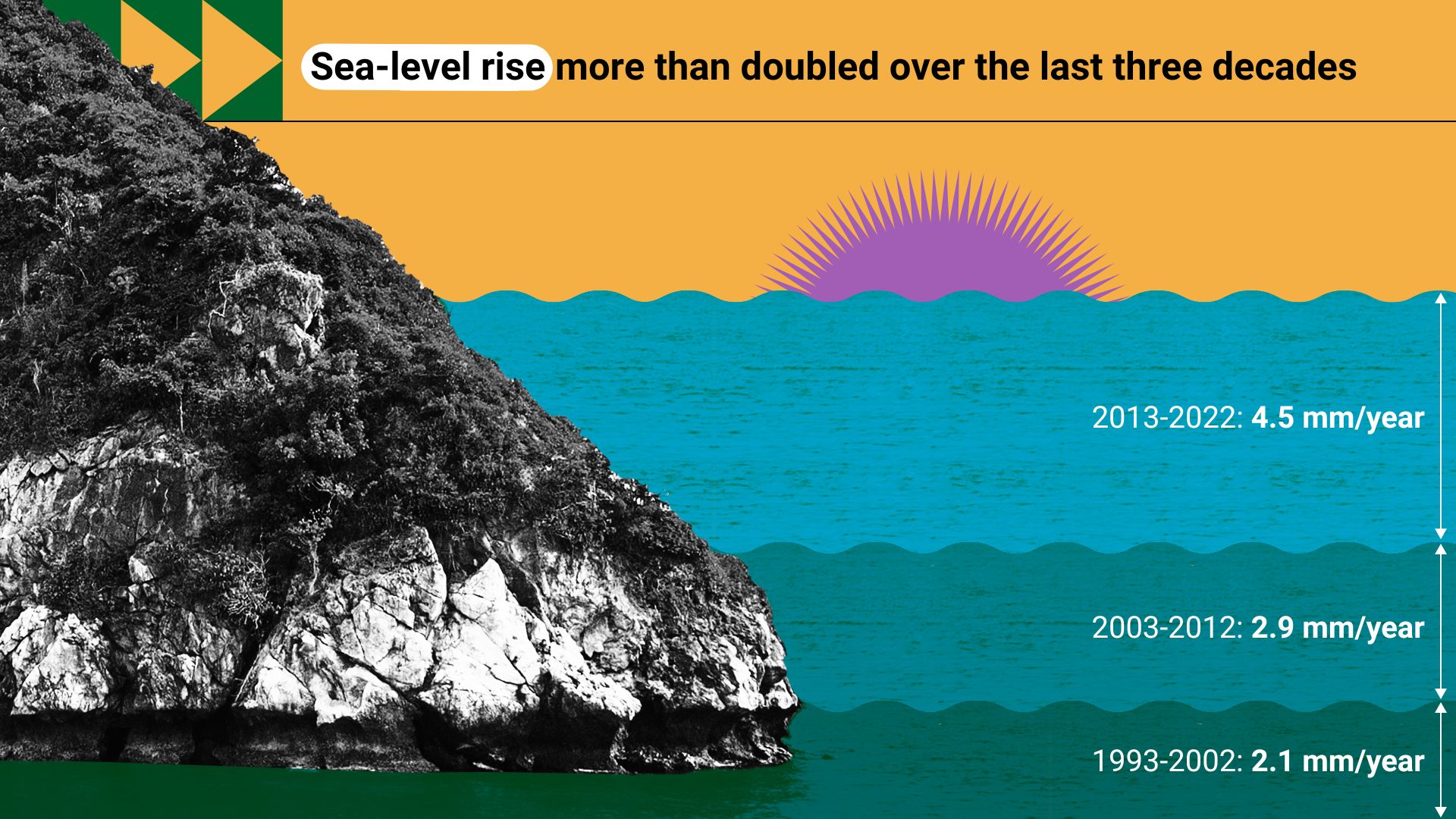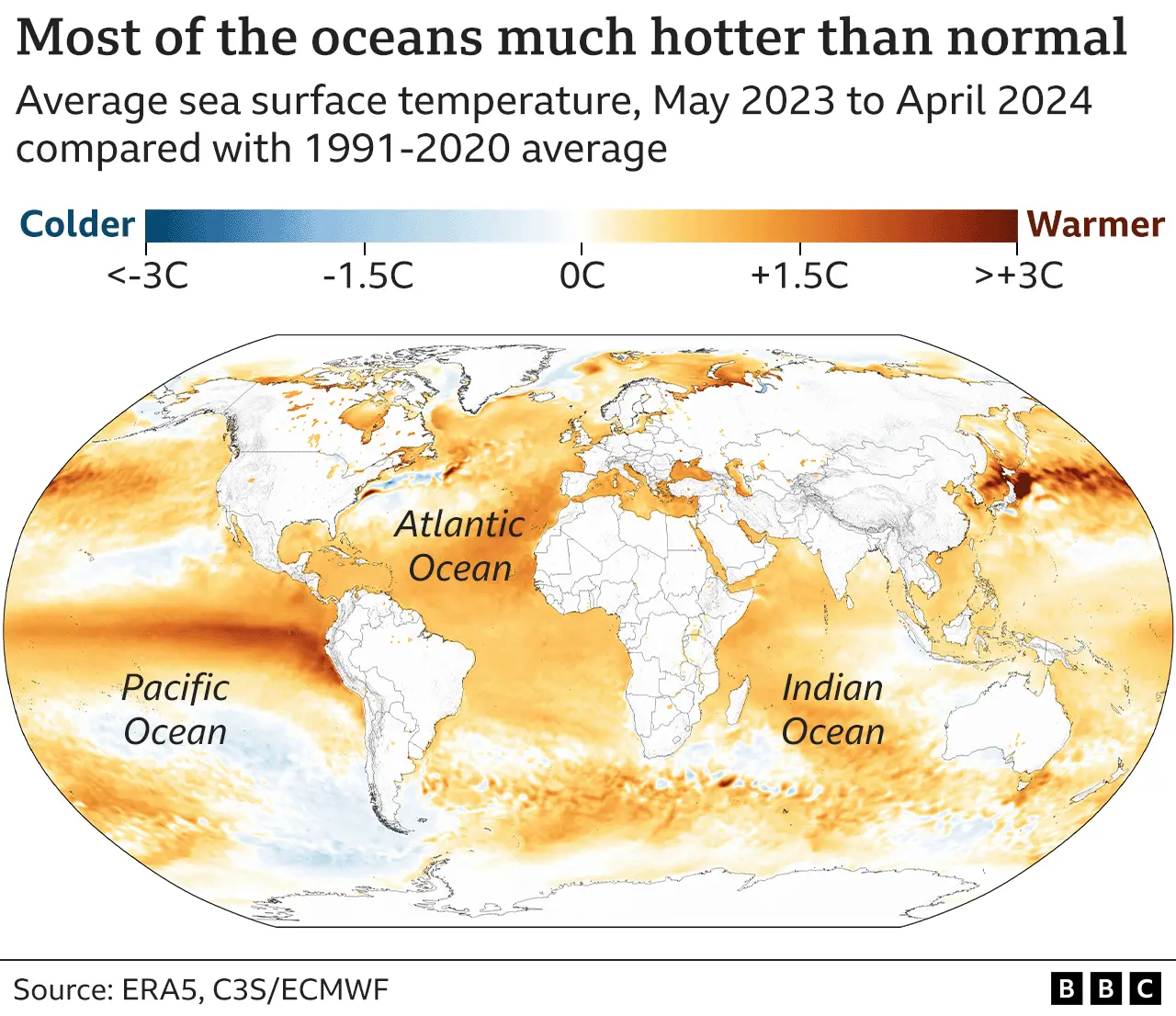Discover Pandipedia
Pandipedia is the world's first encyclopaedia of machine generated content approved by humans. You can contribute by simply searching and clicking/tapping on "Add To Pandipedia" in the answer you like. Learn More
Expand the world's knowledge as you search and help others. Go you!

Rainwater harvesting is a sustainable system that offers gardeners the ability to collect and use rainwater for irrigation and other non-potable purposes. By adopting rainwater harvesting techniques, you can conserve water, reduce reliance on municipal supplies, and promote healthier plant growth. Here’s how you can implement this eco-friendly practice in your garden.
Understanding the Basics of Rainwater Harvesting

Rainwater harvesting involves collecting rainwater that falls on your property, typically from rooftops and paved surfaces, and storing it for later use. This practice has significant benefits, including environmental conservation, cost savings, and improved garden health. Rainwater is untreated and free from chemicals like chlorine found in tap water, making it particularly beneficial for sensitive plants such as orchids and lime-hating species like azaleas and rhododendrons, which thrive when irrigated with naturally soft rainwater[4][5].
Steps to Implement Rainwater Harvesting
1. Setting Up a Collection System

The first step in rainwater harvesting is to establish a collection system. This is most commonly achieved by installing rain barrels or larger cisterns under downspouts connected to your roof. When it rains, water flows from the roof into gutters, downspouts, and finally into these storage tanks[1][4]. Here are some collection methods:
Rain Barrels: These are simple and cost-effective solutions typically made from durable plastic or wood, with a spigot attached for easy access to the water stored inside. They generally hold around 50 to 100 gallons and are suitable for small garden areas[1][3].
Larger Storage Tanks: For more extensive gardening needs, consider installing a dry or wet system. A dry system consists of underground pipes that funnel rainwater directly to larger holding tanks, reducing contamination risks[1][5]. A wet system allows rain to flow from the roof directly to a shallow basin or storage tank[3].
2. Ensuring Water Quality
To ensure the collected rainwater is clean, a filtration system is vital. Simple mesh filters can capture leaves, twigs, and other debris before the water enters storage tanks. More advanced systems may use vortex technology, which can filter finer particles and maintain water quality by preventing sediment disturbance in tanks[1][4][6]. Installing first flush diverters can also help to exclude the initial runoff—which is often the most contaminated—before large volumes of rainwater are collected[3][5].
3. Integrating with Your Irrigation System
Once you have an effective collection system in place, integrate it with your irrigation setup. Using soaker hoses or drip irrigation systems connected to rain barrels ensures that water is delivered directly to the plant roots, minimizing evaporation and runoff. This targeted watering is especially effective as it helps maintain soil moisture without wastage[1][3][6].
4. Calculating Storage Needs
Determining how much water you need for your garden is crucial. Analyze your garden's size, the types of plants you are growing, their individual water needs, and local rainfall patterns. This information helps in calculating storage capacity and deciding whether you need a single large irrigating tank or multiple smaller tanks strategically placed around your garden[1][3].
Benefits of Rainwater Harvesting
Environmental Impact

Through rainwater harvesting, you can significantly mitigate stormwater runoff, which can contribute to soil erosion and pollution of local waterways. By capturing rainwater, you are not only using a free resource but also assisting in maintaining local ecosystems[2][5]. This practice can create mini-reservoirs that contribute to sustaining soil health and reducing the need for chemical fertilizers, which are often washed away in excess rain[4][5].
Economic Advantages

Financially, rainwater harvesting reduces dependence on municipal water, leading to lower water bills. Though costs are associated with installing collection and filtration systems, the long-term savings on water use can be substantial. In addition to savings, some regions may offer rebates or incentives for setting up rainwater harvesting systems, enhancing their financial viability[1][5][6].
Practical Uses

Beyond irrigation, collected rainwater can be useful for diverse activities in the garden and household. Homeowners can utilize rainwater for washing cars, cleaning outdoor furniture, flushing toilets, or other non-potable uses. This versatility increases the overall value of the rainwater harvesting system within the lifestyle of the household[2][4][6].
Conclusion
Incorporating rainwater harvesting into your gardening practices provides a sustainable method for resource management while yielding numerous benefits. Whether through simple rain barrels or more complex systems, gardeners can effectively utilize collected rainwater for irrigation and beyond. By adopting these methods, you contribute positively to the environment, make economical choices, and foster a healthier garden ecosystem.
Let's look at alternatives:
- Modify the query.
- Start a new thread.
- Remove sources (if manually added).
- Request a manual search from our human research team.
Based on the provided information, to prevent cheese from sliding off your pizza, consider adjusting the moisture levels of the cheese and sauce by mixing some of the cheese into the sauce. Also, try submerging toppings under the cheese and sauce to prevent sliding. Additionally, consider the order of assembly, as placing cheese below the toppings could help it stick to the crust better[1]. The type and amount of sauce, as well as the toppings used, can also affect how well the cheese stays on. Letting the pizza cool for a few minutes before eating can help, and you can also try using low-moisture[2] cheese and adjusting your sauce recipe to prevent the cheese from sliding off.
Let's look at alternatives:
- Modify the query.
- Start a new thread.
- Remove sources (if manually added).
- Request a manual search from our human research team.
Get more accurate answers with Super Search, upload files, personalised discovery feed, save searches and contribute to the PandiPedia.

The study by Demir (2019) reviews the integration of digital technologies in organizations and their impact on employment trends. It identifies major technological trends influencing organizational behavior and highlights the transformation of professional skills needed in various industries. The findings suggest that digitalization is significantly reshaping national economies and industrial practices, ultimately impacting organizational structures and employment dynamics globally[2][3].
Moreover, the research emphasizes the necessity for organizations to adapt to these changes by developing relevant digital skills among employees to maintain competitiveness in the market. The study provides valuable insights into how these developments can enhance human resource management and organizational effectiveness[1][4].
Let's look at alternatives:
- Modify the query.
- Start a new thread.
- Remove sources (if manually added).
- Request a manual search from our human research team.

The bulk of spending in AI large language model (LLM) development is still dominated by compute, specifically, the compute needed to train and run models[1]. Training costs remain extraordinarily high and are rising fast, often exceeding $100 million per model today[1].
Even as the cost to train models climbs, a growing share of total AI spend is shifting toward inference, the cost of running models at scale in real-time[1]. As inference becomes cheaper, AI gets used more[1]. And as AI gets used more, total infrastructure and compute demand rises, dragging costs up again[1].
Let's look at alternatives:
- Modify the query.
- Start a new thread.
- Remove sources (if manually added).
- Request a manual search from our human research team.
Performance Overview
Buffett highlights that Berkshire Hathaway's performance in 2024 exceeded his expectations despite 53% of the 189 operating companies reporting a decline in earnings. The strong performance was driven by a notable increase in predictable investment income, resulting from higher Treasury yields and a substantial rise in holdings of highly liquid short-term securities. He emphasizes that the focus is on operating earnings—totaling $47.4 billion—rather than on GAAP-reported figures, underscoring a long-term view on investments and business performance[1].
Insurance Business Insights and Property/Casualty Commitment
A major part of the letter is devoted to Berkshire’s insurance segment. Buffett reports significant earnings growth in the insurance business, particularly highlighting GEICO’s improved efficiency and updated underwriting standards under Todd Combs. Although GEICO’s transformation is still in progress, the progress made in 2024 was impressive. Additionally, Buffett discusses the property and casualty (P/C) sector, noting that P/C pricing strengthened in 2024 even as losses from convective storms increased. While there have been no catastrophic events, he cautions that the unpredictable nature of such events means a truly shocking loss could occur at any time. The letter also points out the advantage of collecting cash up front with P/C insurance—a model that has allowed Berkshire to accumulate a sizeable float over time, which has grown from $46 billion to $171 billion in recent decades[1].
Tax Contributions and Reinvestment Philosophy
Buffett marks a historical milestone regarding tax contributions. Berkshire Hathaway made four tax payments totaling $26.8 billion in 2024, which accounts for about 5% of all taxes paid by U.S. corporations. This record tax payment is attributed to the company’s long-standing reinvestment strategy, in which shareholders received only one cash dividend from 1965 to 2024. Rather than paying out frequent dividends, this approach has allowed Berkshire to build taxable income continuously over time. Buffett’s discussion of the tax figures serves to illustrate the long-term benefits of reinvesting earnings rather than distributing them as cash, thereby strengthening the foundation for future growth and supporting public finances[1].
Investment Strategy and Global Expansion
The letter reaffirms Berkshire’s commitment to keeping the majority of shareholder funds invested in equities instead of cash equivalents. Buffett notes that despite occasional opportunities, the company prefers to remain fully invested in stocks, particularly those of U.S. companies with strong fundamentals. He also outlines a growing focus on international diversification through investments in Japan. Berkshire has been acquiring stakes in five leading Japanese companies—Itochu, Marubeni, Mitsubishi, Mitsui, and Sumitomo—since July 2019. These investments, which began with a total cost of $13.8 billion and have grown to a market value of $23.5 billion by the end of 2024, are intended for long-term holdings. The approach includes maintaining a controlled position below 10% for each company, along with balancing yen-denominated borrowings to achieve currency neutrality. This strategy reinforces the company’s belief in the enduring quality of well-managed businesses both domestically and internationally[1].
Perspective on American Capitalism
Buffett’s letter includes a broader reflection on the merits of American capitalism. He underscores that the success of Berkshire Hathaway and the nation itself is tied to a culture of continuous savings and reinvestment. By choosing reinvestment over dividend payments, Berkshire’s shareholders have contributed to the accumulation of wealth over several decades. Furthermore, Buffett emphasizes that this system—despite its occasional flaws—is capable of extraordinary achievements and has enabled the United States to make remarkable progress over its 235-year history. He stresses the importance of prudent savings and wise investment decisions in driving economic growth, even as challenges such as climate change and unpredictable losses in insurance persist[1].
Annual Shareholder Engagement and Community Initiatives
In addition to financial and strategic topics, Buffett gives details about the upcoming Omaha Annual Meetup, which serves as a platform for shareholder engagement and community building. The letter outlines a schedule filled with speeches, a question-and-answer session, and themed events such as the popular Brooks Run. These gatherings are designed not only to provide updates on Berkshire Hathaway's performance but also to strengthen the sense of community among shareholders. Buffett even highlights a philanthropic initiative that involves donating signed copies of a new book to support services for homeless adults and children, underscoring the company’s commitment to giving back. This focus on community underscores the importance Buffett places on maintaining strong ties between corporate success and societal well-being[1].
Let's look at alternatives:
- Modify the query.
- Start a new thread.
- Remove sources (if manually added).
- Request a manual search from our human research team.
:max_bytes(150000):strip_icc()/GettyImages-1279140719-fdc42de2b18241dc8b2a3d2c6730960c.jpg)
Fermented foods have gained recognition for their potential health benefits, which extend beyond simple nutrition. The process of fermentation, which utilizes live microbes such as bacteria and yeast, not only preserves food but also enhances its health properties. Here's a look at the key benefits associated with the consumption of these probiotic-rich foods.
Improved Digestive Health
One of the primary advantages of consuming fermented foods is their positive impact on digestive health. Fermented foods are rich in probiotics, beneficial bacteria that help maintain a balanced gut microbiome. A study indicated that probiotics can assist in restoring the balance of gut bacteria, alleviating various digestive issues such as bloating, gas, and constipation[3][10]. For instance, fermented products like yogurt and kefir have been shown to improve symptoms for those with irritable bowel syndrome (IBS)[4]. The bacteria in these foods help break down nutrients, making them easier for the body to digest and absorb[4][10].
Strengthened Immune Function
The connection between gut health and immunity is significant, and fermented foods play a crucial role in enhancing immune function. Probiotics from these foods help train the immune system to differentiate between harmful and beneficial bacteria, potentially reducing the risk of autoimmune diseases[2][10]. Additionally, the consumption of probiotics has been linked to fewer instances of infections, including respiratory infections such as the common cold[3]. The fermentation process also produces beneficial compounds like short-chain fatty acids that further support immune and intestinal health[10].
Anti-Inflammatory Properties

Chronic inflammation is a precursor to numerous health problems, including cardiovascular disease, diabetes, and obesity. Fermented foods can help mitigate chronic inflammation in the body. Studies have found that consuming these foods can lead to lower levels of inflammatory markers in the blood[7][10]. This reduction in inflammation is significant as it may help alleviate symptoms associated with conditions like arthritis and other inflammatory diseases[10].
Enhanced Nutrient Absorption
The process of fermentation can increase the bioavailability of various nutrients, allowing the body to absorb more vitamins and minerals from food. For example, fermentation can break down phytic acid found in grains and legumes, which otherwise inhibits the absorption of key minerals such as zinc and iron[4]. Additionally, the fermentation process can enhance levels of certain nutrients, including B vitamins and vitamin K2, which are crucial for many bodily functions[4][5].
Mental Health Benefits
Emerging research suggests that fermented foods may also positively affect mental health. The gut-brain axis, a complex communication network linking the gastrointestinal tract and the brain, plays a crucial role in influencing mood and mental well-being. Probiotics found in fermented foods are thought to impact this relationship by promoting a healthy gut microbiome, which can help alleviate symptoms of anxiety and depression[6][9][10]. One study found that individuals consuming plant-based fermented foods exhibited greater bacterial diversity and improved mental health scores[2][10].
Cardiovascular Health
Fermented foods have exhibited potential benefits for heart health. Regular consumption may help reduce risk factors associated with cardiovascular disease, such as high blood pressure and high cholesterol levels. Probiotics in these foods can influence lipid metabolism and may lead to reduced levels of 'bad' LDL cholesterol, according to various studies[9][10]. Additionally, the anti-inflammatory properties of fermented foods contribute to improved vascular health by reducing systemic inflammation[10].
Weight Management
Research indicates a correlation between fermented food consumption and weight management. Probiotics can assist in appetite regulation and fat metabolism, potentially leading to weight loss. They also impact the absorption of dietary fats and carbohydrates, which can influence overall body weight and composition[7][10]. The regular intake of fermented foods could be beneficial as part of an overall strategy for maintaining a healthy weight[9][10].
Considerations and Safety
While the benefits of fermented foods are promising, there are a few considerations. Individuals new to these foods should introduce them gradually to minimize potential digestive discomfort, such as gas and bloating, which can occur initially as the gut adjusts to higher probiotic levels[1][4]. It's essential to choose fermented products that contain live cultures, as not all fermented foods provide the same health benefits. Foods that have been pasteurized or processed may have lost their probiotic content, so checking labels for 'live and active cultures' is crucial[6][9].
Furthermore, some individuals may need to limit their intake of fermented foods, such as those with specific food intolerances or compromised immune systems[4][10]. For most healthy individuals, however, including a variety of fermented foods in their diet is generally considered safe and beneficial.
Conclusion

Incorporating fermented foods into one's diet can offer a range of health benefits, from improved digestive health and stronger immune function to enhanced mental well-being and better nutrient absorption. With their potential to combat chronic inflammation and support heart health, fermented foods represent a valuable component of a balanced diet. As research continues to unfold, our understanding of these foods and their roles in promoting health is likely to expand further.
Let's look at alternatives:
- Modify the query.
- Start a new thread.
- Remove sources (if manually added).
- Request a manual search from our human research team.
Get more accurate answers with Super Search, upload files, personalised discovery feed, save searches and contribute to the PandiPedia.
Climate change has significant and far-reaching impacts on marine life, disrupting ecosystems, driving species migrations, and multiplying extreme marine events. This report compiles insights from multiple sources to provide a comprehensive overview of how global warming is affecting the oceans and the life they support.
Warming Oceans
The earth's oceans are experiencing unprecedented warming due to the accumulation of greenhouse gases in the atmosphere. Since oceans absorb about 90 percent of the excess heat trapped by these gases, they have now reached record temperature levels[2][3][4][5][7]. Every day for the last 12 months, the average temperature of the sea’s surface has been the highest ever recorded for those calendar dates[3]. This continuous heating has been exacerbated by natural climate phenomena like El Niño, which shifts warm waters across the tropical Pacific Ocean and contributes to these temperature spikes[3][4].
Sea-Level Rise

One of the major impacts of climate change is rising sea levels, driven by melting ice sheets and glaciers and the thermal expansion of seawater. The global mean sea-level reached a new record high in 2021, rising an average of 4.5 millimeters annually from 2013 to 2021[2]. This rise amplifies extreme weather events, contributing to deadly storm surges, flooding, and coastal erosion[2]. Regions such as the western Tropical Pacific and the South-west Indian Ocean are experiencing this rise more rapidly than other areas[2].
Marine Heatwaves

Marine heatwaves have doubled in frequency and have become increasingly intense and prolonged[3]. Human activities have been identified as the main driver of ocean heat increases since the 1970s[2][3]. Approximately 60 percent of the world’s ocean surface experienced at least one period of marine heatwave in 2021, which led to widespread coral bleaching and reef degradation[2][3][4].
Coral Bleaching

Coral reefs have been severely affected by rising ocean temperatures. When stressed by excessive heat, corals expel the symbiotic algae living in their tissues, leading to coral bleaching. This results in the loss of vital marine ecosystems that support around a quarter of all marine species[2][3][4]. The latest data indicates that the world's coral reefs could experience bleaching events every year by the end of the century if current warming trends persist[2]. The ongoing global coral bleaching event, which started in early 2023, is the fourth since the phenomenon was first observed in the 1980s and has had devastating effects on coral ecosystems from the Caribbean to the Great Barrier Reef[3].
Loss of Marine Biodiversity

Rising ocean temperatures and acidification are causing significant shifts in marine biodiversity. Many marine species are migrating to cooler waters, while others face extinction[2][6]. The UN Educational, Scientific and Cultural Organization warns that more than half of the world’s marine species may be on the brink of extinction by 2100 if current trends continue. The ecosystems that these species form part of, including vital structures like coral reefs and mangroves, have already seen considerable damage[2][4][6].
Acidification and Hypoxia

Increasing greenhouse gas emissions also contribute to ocean acidification, which affects many marine organisms' ability to form shells or skeletons. Additionally, reduced oxygen levels, known as hypoxia, can create dead zones where marine life cannot survive[6]. The combination of warming temperatures, acidification, and hypoxia can have devastating impacts on the broader marine and coastal ecosystems, affecting food chains from plankton to apex predators like whales[6].
Impact on Fisheries

Climate change significantly disrupts marine fisheries, upon which millions depend for food and employment. As fish migrate to cooler waters, the traditional ranges of many species are shifting northwards or to deeper waters, affecting commercial and subsistence fisheries alike[2][6]. This displacement requires fishing vessels to travel further, increasing operational costs and complicating regulatory frameworks, which can impact the livelihoods and food security of coastal communities[6]. Fishery management needs to adapt to these changes to avoid overfishing and ensure the sustainability of fish stocks[6].
Extreme Marine Events

Extreme marine events such as heatwaves, dead zones, and intensified tropical cyclones are becoming more frequent and severe[6]. For example, the Atlantic hurricane season is expected to be hyperactive due to the unusually warm sea surface temperatures, which provide the energy necessary for storm formation[3][4]. Such extreme events pose a direct threat to marine life and can cause substantial socio-economic damage to coastal regions[3][6].
Long-Term Implications
The long-term implications of climate change on marine life are profound. Melting ice sheets and glaciers continue to contribute to sea-level rise, leading to coastal erosion and habitat loss[4]. The persistence of warm ocean temperatures could usher in a new normal, with continuous extreme weather patterns and significant disruptions to marine ecosystems[2][7].
Conclusion
Climate change poses a myriad of dangers to marine life. From rising temperatures and sea levels to the acidification of ocean waters and the increased frequency of extreme marine events, the impact on marine biodiversity and human livelihoods is substantial. Comprehensive and sustained efforts are required to mitigate these impacts and adapt existing practices to safeguard both marine life and the economies that depend on them.
This report synthesizes information from multiple sources to provide a holistic view of the impact of climate change on marine life[2][3][4][5][6][7]. By understanding these impacts, we can better prepare for the challenges that lie ahead and take actionable steps to protect our oceans.
Let's look at alternatives:
- Modify the query.
- Start a new thread.
- Remove sources (if manually added).
- Request a manual search from our human research team.
Cars make a different noise when reversing primarily due to the type of gears used in the transmission. The reverse gear typically employs spur gears, also known as straight-cut gears, which produce a more pronounced noise because they do not mesh as quietly as helical gears used for forward movement. Spur gears engage with a slamming action that creates a high-pitched whine, particularly increasing in pitch with speed[1][4].
In addition to the gear design, several mechanical issues can cause noise while reversing. Common reasons include worn-out brake pads, which may cause grinding sounds due to metal-on-metal contact[3]; issues with the reverse gear, such as worn or stripped teeth that affect engagement; and low transmission fluid, which can increase friction and noise[3][2]. Other potential sources of noise may include differential wear, exhaust system problems, and worn engine mounts[2][3]. Timely attention to these noises is vital to prevent further damage to the vehicle.
Let's look at alternatives:
- Modify the query.
- Start a new thread.
- Remove sources (if manually added).
- Request a manual search from our human research team.
Let's look at alternatives:
- Modify the query.
- Start a new thread.
- Remove sources (if manually added).
- Request a manual search from our human research team.

Alphabet Inc.'s lab X is laying off dozens of employees[1] and seeking outside investors for funding its ventures. The division is adopting a new structure[1] to spin out projects as independent startups, and is focusing on collaborating with a broader base of industry and financial partners[1]. The layoffs are focused on support staff[1]. Astro Teller, who leads the lab, wrote in an email that the new approach will allow X to focus on inventing breakthrough technologies to[1] solve pressing challenges.
Let's look at alternatives:
- Modify the query.
- Start a new thread.
- Remove sources (if manually added).
- Request a manual search from our human research team.